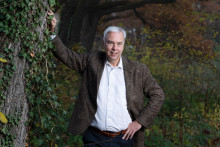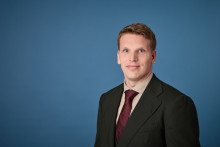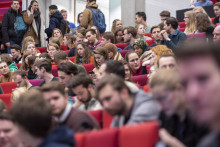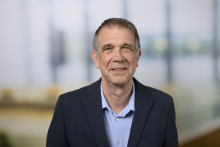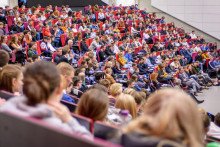What have you been up to since your official start at the UT?
Keurentjes: ‘We have found out that the existing knowledge base on energy issues is enormous at the UT. There are about six hundred researchers active in the domain. The pity is that the outside world doesn’t know yet. Which is something we are trying to change now. We are wrapping the things we already have in nice packages that can be displayed.’
You founded the Centre for Energy Innovation. What are its main objectives?
‘There are three pillars of the Centre: learning function, hub function - to connect external inquiries to our internal knowledge base - and as the third, largest pillar, we have created four mission-driven programmes. When it comes to the learning pillar, we have found out that there is a huge demand for human capital in the energy domain. In the Netherlands alone, we are talking about hundreds of thousands of new or retrained employees that are needed in the coming decades. This applies to all levels, from academia to tradesmen. We are setting up challenge-based learning programmes, where we don’t only focus on the academic portion but also integrate different levels of education while working on the same challenge together. This can also provide learning environment to people who already work in companies and need to be retrained. It has been agreed by the executive boards of the UT, Saxion and ROC Twente that they will all support this challenge-based learning focused on energy transition. We are now busy with setting up this learning programme.’
One of your main goals as the Energy Innovation Programme Director was to create a clear entry point for external parties with energy related inquiries. Have you achieved that?
‘Yes, that is the Centre’s second pillar: the hub function. We have seen that there are many industry and governmental questions from parties for which the university is quite inaccessible. For them, the university is a like giant fortress where you can’t find your way. We see that people start to find us as an entry point. Companies come along with specific questions, most of which are multidisciplinary and complex, and we connect them to researchers who bring all the knowledge they need.’

Do you have any examples of such questions?
‘For instance, we were approached by Univé. This insurance company found out that fire claims where solar panels are involved are much higher than usual and they don’t know why. We are also talking with a defense organization. They want people in the field to be independent from connections, but energy requirements for electronics they carry is enormous. They’d like us to help them provide smart system solutions, lightweight batteries, smart solar panels and whatever else we can.’
You mentioned four mission-driven programmes you are working on within the Centre. What are they?
‘We have defined four themes where we think the UT can make a significant contribution and can profile itself in a unique way. These are Battery Storage, Negative Emission Technologies, Digitalization of Energy Systems and Energy Neutral Data Centers. The last one is the most advanced of them. Data centers have a large energy consumption. The industry itself has said they want to be carbon neutral by 2030. We have put together a number of disciplines within the UT to provide solutions – on smart heat integration, artificial intelligence to better manage the internal side of data centers, photonics and neuromorphic computing. We have defined this programme and we have been talking to about thirty companies in the domain. They all say “yes, this is what we need and there is no programme like this elsewhere”. We have a fantastic lineup of potential partners. Within the Negative Emissions programme, we are talking to many companies. We see that companies are directing big budgets to the topic of negative emission technologies. For example, Microsoft has reserved a billion for this topic, but there are not that many applications for this fund. We talk to them regularly and they are interested in our expertise, because we also have knowledge on the socioeconomic side of the domain.’
Are you happy with what you have achieved at the UT so far?
‘Yes, but due to corona it is not moving as fast as we would like it to. On the other hand, despite corona, all kinds of organizations know how to find us. We are very happy with what has happened so far, but we still have work to do. I’m happy to see how many people we have connected internally, but I want to create even better internal coherence. Nevertheless, I feel that we are putting the UT more on the map.’
Have you set out any new goals to achieve in your role?
‘The structure is there, everything is in motion. The four programmes are all under constructions, some are moving faster than others, but it is all coming together. In a year from now I hope that all the programmes have found a solid ground. That is my ambition and I think we are on track to realize that.’


